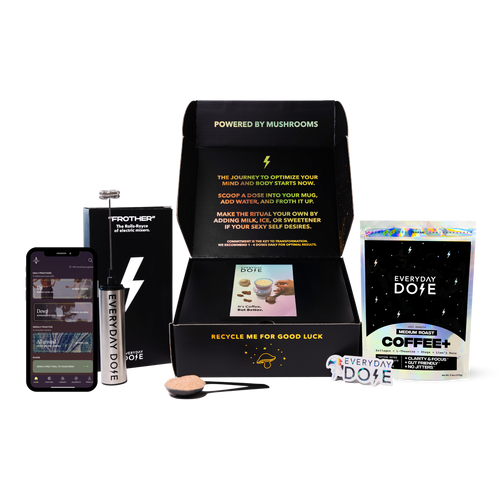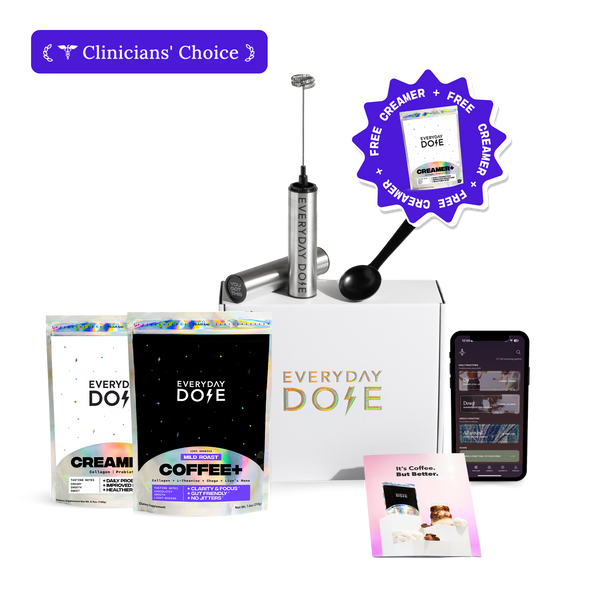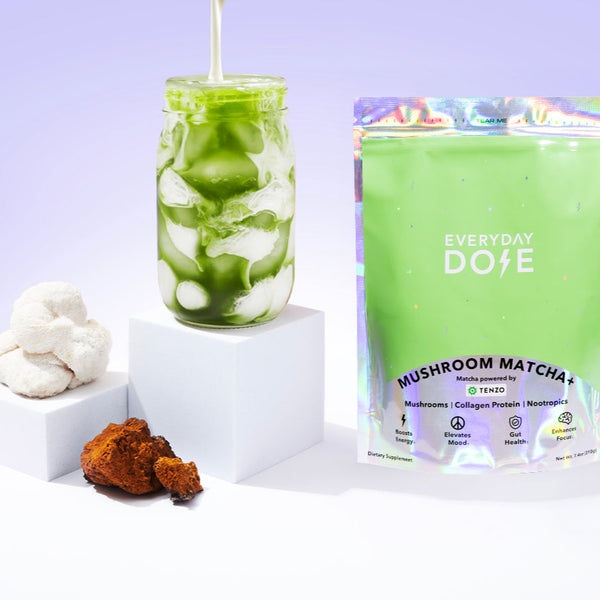6 Benefits of Low Acid Coffee

Coffee lovers know the struggle when choosing a second cup of coffee also means choosing heartburn, digestive upset, and jitters. Fortunately, you don’t have to just accept this lose-lose situation — many people opt for low-acid coffee instead.
If you’re wondering what the heck that means and how it works, you’re in the right place. In this article, we’ll discuss the benefits of low-acid coffee, how coffee acidity works, and what affects acidity levels.
What Counts as Low Acid Coffee?
Low-acid coffee isn’t defined by a single global standard. In general, though, coffee earns the “low-acid” label if it has less total acidity, or a pH closer to neutral water, which rests at 7.0.
Regular coffee usually hovers around a pH of 4.5 to 5.0, which is acidic enough to bother sensitive stomachs or enamel. For reference, tomato sauce sits at a 4.6, lemon juice is between 2.0 and 3.0, and many berries sit just below 4.0. Low-acid coffee often clocks in closer to 5.5 to 6.0.
Brands achieve this in a few ways. They select specific beans that naturally contain fewer chlorogenic acids, roast them darker (which lowers acid), or use gentler brewing and extraction methods.
6 Benefits of Low-Acid Coffee
So, low-acid coffee is pretty much exactly what it sounds like. But what’s the big deal? Why does that matter? Read on for some of the main benefits of drinking low-acid coffee.
1. May Be Easier on Sensitive Stomachs
If regular coffee leaves your stomach protesting, low-acid coffee might be able to help. The acids in traditional brews can irritate the stomach lining or trigger reflux, especially if you already deal with a sensitive digestive system. This can cause symptoms like heartburn, stomach upset, and loose stools.
By dialing down the acid, you can reduce the chance of feeling fiery and unsettled. Studies even suggest darker roasts (which naturally contain less acid) stimulate less stomach acid than lighter roasts.
2. Gentler on Tooth Enamel
Your teeth work hard, so the last thing they need is a daily acid bath. Coffee is naturally acidic, and enamel begins to erode around a pH of 5.5. Standard coffee often lands below that line, which means enamel slowly takes the hit over time.
Low-acid coffee, on the other hand, tends to hover closer to neutral, making it less erosive. Now, this doesn’t mean you can ditch brushing twice a day. But it does mean every sip is a little less harsh on your chompers.
4. Smoother Flavor Profile
If you’ve ever taken a sip of coffee and felt it in the back of your throat, acidity was the culprit. While some coffee connoisseurs adore that bright, citrusy zing, others prefer a more mellow experience.
Low-acid coffee delivers exactly that: A smoother, rounder flavor that goes down easy without the tart aftertaste. Think chocolatey, nutty, or earthy notes instead of lemon peel and grapefruit.
5. Retains Many Coffee Benefits
The best part is that going low-acid doesn’t mean missing out on what makes coffee so magical. You’ll still get the caffeine buzz (unless you choose decaf), the antioxidants, and the potential wellness perks linked to regular coffee consumption, like sharp focus and plenty of motivation.
The difference is that your body may tolerate it better, which means you can actually enjoy the benefits without side effects stealing the spotlight. It’s the same coffee power, just delivered in a more stomach- and tooth-friendly package.
6. May Lessen Post-Coffee Urgency
We all know the stereotype: coffee goes in, and… well, you’d better know where the bathroom is. This is because coffee stimulates digestive motility, partly due to caffeine and partly because acids encourage gastric activity. For some people, though, this effect is less of a perk and more of a problem.
Low-acid coffee reduces one of the triggers for that “gotta-go” urgency, making it easier to sip without scheduling your morning around bathroom breaks. It doesn’t make the effect disappear completely, but many sensitive drinkers report fewer bathroom dashes when switching to low-acid options.
What Affects Acidity?
You may be wondering how coffee brands are able to get their coffee to be less acidic. The truth is, it doesn’t have anything to do with crazy chemicals or extra processing — just making small adjustments in the coffee-making process. Here’s how it works.
Roast Level
The darker the roast, the less acidic the coffee. During roasting, many of the acids that make your stomach fight back (like chlorogenic acids) break down. That’s why a French roast tastes bold but mellow, while a light roast can feel like a citrusy punch to the gut.
The trade-off is that dark roasts may sacrifice a few antioxidants. For people who want less burn and more balance, though, it’s a fair deal.
Brewing Method
The way you brew can have a huge effect on acidity. Cold brew, for instance, comes out with less perceived acidity because steeping grounds in cool water extracts fewer of the sharp compounds that make your tongue tingle.
Meanwhile, brewing hot (especially pour-over or espresso) pulls out more acids, giving you that bright, lively taste — but of course, this also ups the acidity. If you’re chasing smoothness, methods like cold brew or French press are good options.
Extraction
Not all low-acid coffees work on the same level, and this is where we get to flex. Traditional methods just lower acid levels by darkening the roast. However, our Mushroom Coffee+ is made with a proprietary low-acid extraction process that carefully controls how the coffee’s compounds are released.
You’ll still get the rich, espresso-like flavor and satisfying kick of a regular cup of coffee, but you won’t get the digestive side effects. And as a bonus, you can also get the benefits of lion’s mane, chaga, collagen, and L-theanine. When we put it that way, why wouldn’t you try a cup of mushroom coffee?
Bean Origin
Coffee beans are like grapes — where they’re grown dramatically changes the flavor and acidity. High-altitude beans from places like Ethiopia or Kenya often have the bright, fruity tang that indicates higher acidity.
Meanwhile, beans from Brazil, Sumatra, or other lower-altitude regions tend to be smoother, earthier, and lower in acid. If you’re sensitive, choosing the right origin can make as big a difference as roast level.
The Bottom Line
Low-acid coffee proves you don’t have to choose between your love of coffee and your body’s comfort. It can ease stomach upset, protect tooth enamel, smooth out flavor, and still keep the benefits that make coffee beloved worldwide.
There are plenty of ways that you can take control of the acidity in your cup, but why do all that work when we’ve already done it for you? Both our mild and medium roasts are made with our proprietary low-acid Arabica coffee extract.
And don’t worry — with our selection of mushroom coffee recipes, you’ll find that you don’t have to sacrifice any of your favorite drinks, either. In fact, they’ll all get a level up!
Sources:
Can Coffee Cause Gastritis? | Allied Digestive Health
Dental erosion | Oral Health Foundation
Effects of Coffee and Its Components on the Gastrointestinal Tract and the Brain–Gut Axis | PMC
Start your day
The Right Way









